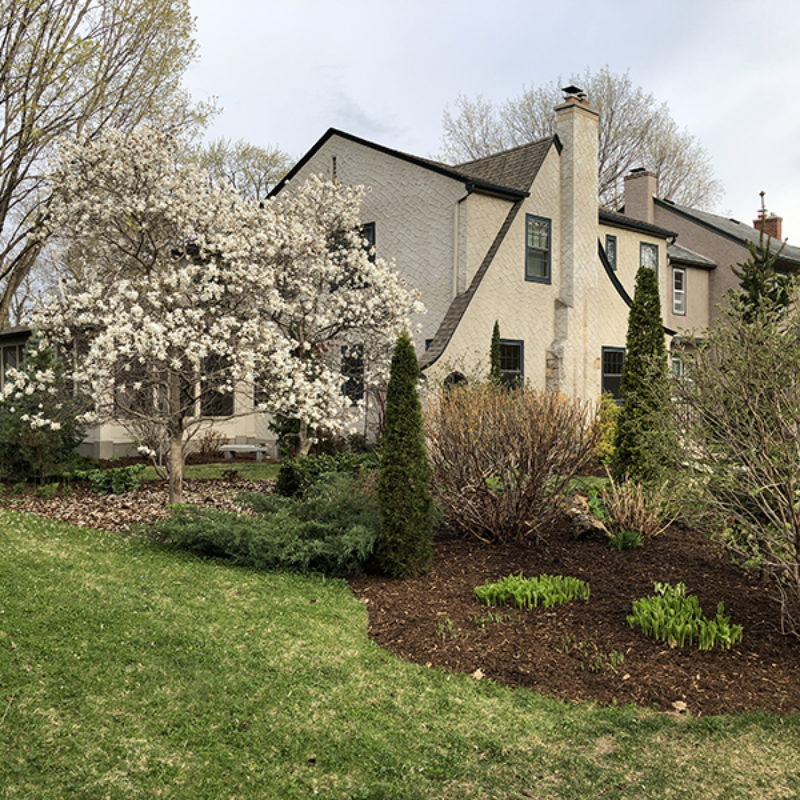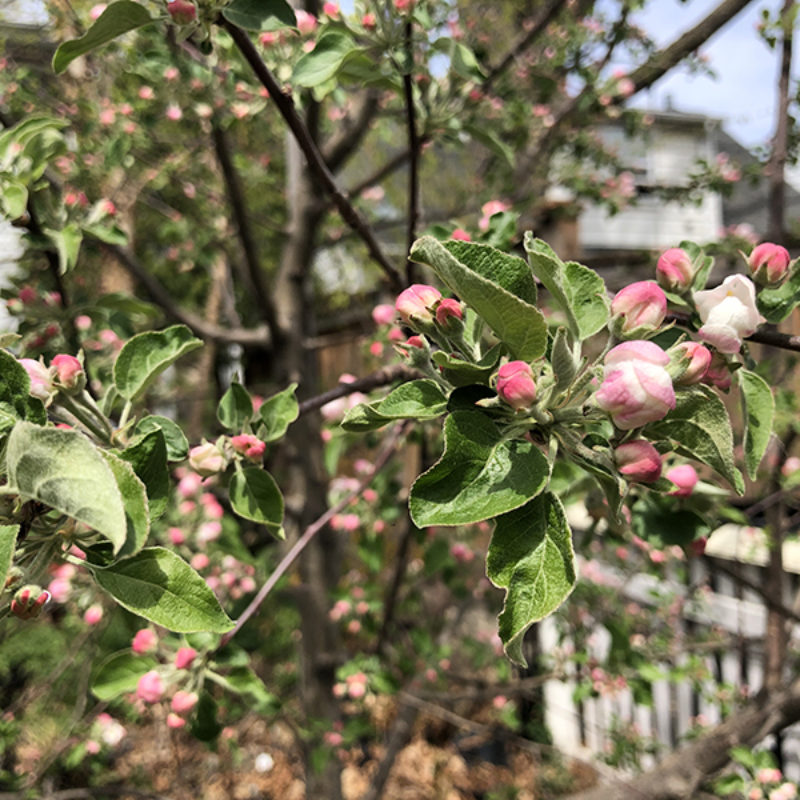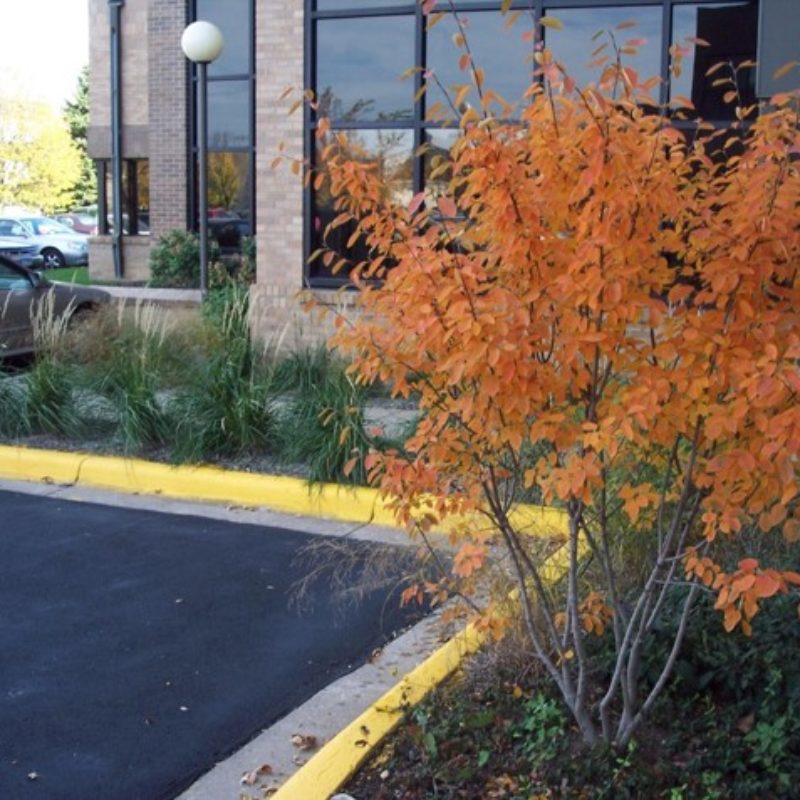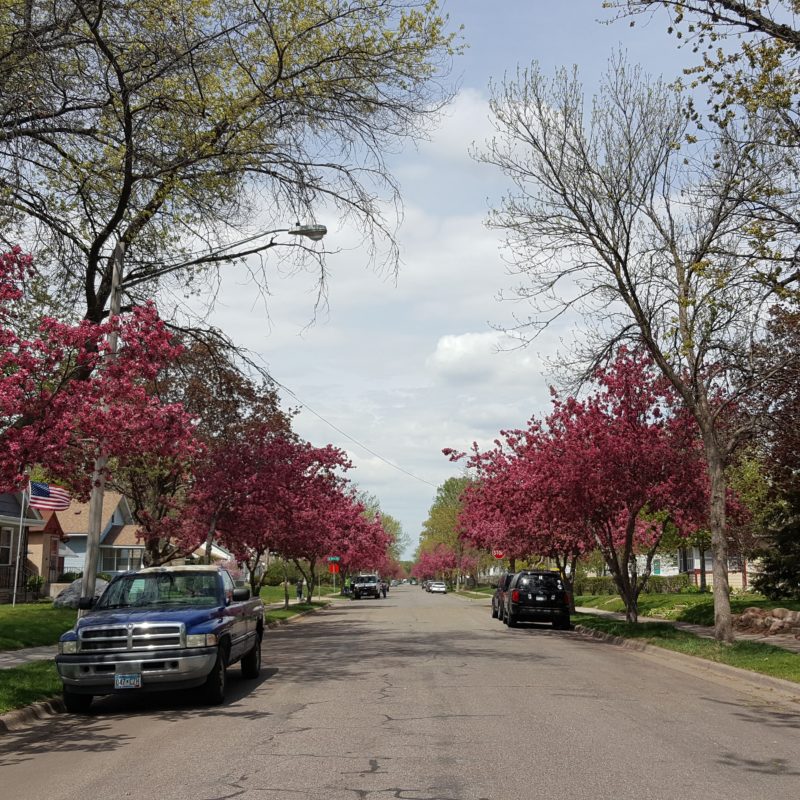One flowering tree can provide as much nectar and pollen as an entire garden. Fruiting shrubs and trees offer multiple other benefits to our yards: habitat, shade, height and structure, food for people and other wildlife, and seasonal interest throughout the year. Large trees can even intercept hundreds of gallons of rain before it becomes runoff.
For more guidance on installing a tree or shrub, check out the Resilient Yards Online Learning Series.
Consider the following when selecting a tree and a location for planting.
Selecting a planting location:
- Locate underground utilities, which should be avoided. Call 811 to have your public utilities marked, and make sure you won’t be digging through any privately-buried power or cable lines.
- How close the tree is to your house. Plant at least 10 ft away from any structure above or below the ground and watch out for your roof overhang.
- Planting on the west side of your house. This will provide late-day shade and also sun from the south side during the winter season.
- Installing a shade garden under your tree. Many plants prefer some protection from the sun, so make use of the vital shade that your tree provides by creating a native shade garden.
Selecting a tree:
- How wide and tall is the space that can be filled? You will likely plant a tree or shrub that is a fraction of its mature size. Make sure it is placed where it can develop a healthy trunk and canopy.
- What are the site conditions? Many trees and shrubs, like other plants, thrive or struggle in different soil and light conditions. Make your life easier and choose one that will thrive. Blue Thumb’s Resources Page has several lists of recommended pollinator-friendly native trees.
- Assess the amount of space for the tree to grow to maturity. If there are overhead power lines or a lot of trees around, plant a shorter tree species.
Planting your tree
When you have the right plant for the right spot, it’s time to dig.
- Dig a hole as deep and twice as wide as the root ball
- Straighten, cut or remove encircling roots. If left to themselves, they will continue to grow in a tight circle that will keep your tree unstable and eventually strangle it.
- Place the tree in the hole so that its root crown is at or slightly above ground level. Make sure it’s straight.
- Backfill the hole, gently but firmly, watering it periodically to reduce air pockets.
- Don’t forget to mulch your newly planted tree!
Mulching your tree
- Mulch helps keep maintenance equipment away from a tree’s base and holds in moisture to aid in tree establishment.
- Mulch around the base of the tree with 2”-3” of double-shredded hardwood mulch. Do not place mulch up to the trunk. Place a ring of mulch around the tree at least 2” from the trunk. Do not grow lawn up to the base of the tree as mowing and weed-trimming can damage the trunk.
- Think ‘donut’ not ‘volcano’ when it comes to mulching! Piling up mulch around the base of the trunk provides a home for damaging insects.
Set up your tree for long-term success with the following:
- Watering: Keep your new tree or shrub watered. This is key to the health of a newly-planted tree. University of Minnesota Extension suggests watering every 2-3 days for 12 weeks after planting. After this period, water 1 inch weekly until roots are established. A steady 1-inch rain can replace a day of watering. As you care for your tree long-term, inspect for erosion or trouble spots and refresh mulch as needed (usually at least once a year).
- Pruning: Wait to prune shrubs until after blooming. Prune for nesting, leave some woody debris and allow some old canes of currants and raspberries to remain. Pruning is a once a year task that keeps shrubs and small trees looking their best. Not sure how to prune your trees and shrubs? Hire a professional or consult UMN Extension for tips.
- See the Minnesota Department of Natural Resources’ Caring for Trees webpage for more detailed seasonal maintenance information.
For more guidance on planning and planting native trees and shrubs, check out the Resilient Yards Online Learning Series.












